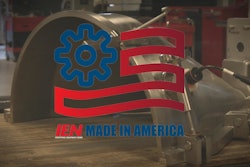
Serving the defense industry presents small business owners with numerous benefits. But unlike large contractors, small businesses live in the shadows, usually playing a support role to high-level programs.
Winning a role in one of these coveted programs can mean a great deal to the bottom line. They often represent long-term revenue, as many Defense Department programs can last in excess of 40 years.
For example, the U2 spy plane, Aegis Combat System and the Patriot surface-to-air missile all have been in service more than 30 years, and current plans are to keep them viable for another three decades.
Understanding the dynamics of military contracts is crucial for small businesses wanting to work for the defense industry. The process can be broken down into three stages. The first stage is discovery, where companies prepare for and obtain military contracts. The second is the execution and initial fulfillment of the contract. The final stage encompasses ongoing, long-term support.
The discovery process for military contracts involves two steps. The first is an internal process that assesses the strength of a company. The second involves finding opportunities that align with its strengths.
A self-inventory of the company is advisable before seeking government contracts. A key step is to identify the expertise that best defines the firm and focusing on programs that match those strengths most closely. The bidding for defense contracts is highly competitive and specialized. Pursuing an opportunity that is not in the company’s core competencies can waste a good deal of time and effort.
It is better to have fewer opportunities closely tracked than to have too many opportunities loosely managed. Seek the contracts that best fit what the company does well. This will make bids more attractive to the military and more competitive against other companies.
Caton Connector Corp. does this by focusing on a small corner of the military market that needs high-voltage cable assemblies. Caton pioneered this sector 40 years ago and remains one of the primary producers of such components. Although Caton has diversified into low-voltage and hybrid cables, it still focuses mostly on the high-voltage market, since it matches its expertise so precisely.
Locating and identifying opportunities involves developing a deep understanding of the needs of the project and the prime contractor.
Focus on listening to the customer to determine its requirements. Obviously, bids showing that a company’s capabilities match closely with the project requirements have a greater chance of success. Understanding the client’s needs is a crucial step in writing such bids.
Teaming with other companies can be desirable in some cases. This broadens capabilities and deepens the talent pool, thereby making a bid more competitive. Small businesses rarely have the capability to complete every aspect of a project, so finding a role to play as part of a larger effort is usually required.
Working with partners also has the added bonus of spreading any financial risks to more participants, reducing the exposure of each individual entity.
Recognizing that the discovery process may be a long-term endeavor is crucial. The planning stages of a government project can take many years given the number of parties that need to approve the project at each stage. The length of the process will generally correlate to the size of the project, with major initiatives taking more than a decade to reach the production stage. Patience is required, as the long-term contract and accompanying revenue stream stability can more than offset the wait.
Execution involves both winning the contract and fulfilling its requirement. It begins with a request for quote, which requires asking the big-picture questions of the discovery process and the specifics of the actual bid. It continues through manufacturing, which includes documentation of compliance with government regulations.
When writing a proposal for a specific contract, the company needs to do an honest assessment of its capabilities. Are the technical requirements for this project something that can be met? Does the firm have the capability to fulfill the contract? If the answer to a portion of the question is “no,” is the capability something that can be reasonably added to its capacity? Expanding to meet the needs of a project is feasible, but only when it relates to core strengths.
Developing a quote for the bid involves a realistic assessment of the time requirements and cost of each phase of the project, including design and development, prototyping and production. The key word in that phrase is “realistic.” Underestimating either time or cost can jeopardize the contract, causing a small business to miss deadlines, or overrun on costs.
Being able to provide accurate assessments involves knowing both the business’ own capabilities and the project requirements, including non-recurring engineering and other one-time costs. The ability to harness expertise to estimate specifics — such as the number of iterations a prototype will need — can lead to a better proposal and set a bid apart from the competition.
Both the bidding process and production will involve documentation of compliance with government requirements and regulations. During the initial stages, companies will need to show that they meet the definition of a small business.
Under the Small Business Acts, the Defense Department is required to set aside a specific number of contracts for small businesses. The government defines small businesses according to either the number of employees or annual revenues depending on the industry.
To take advantage of these set-asides, a company must show that it meets these criteria, as well as other requirements such as licensing, certification and bonding.
Production will also require documentation of compliance. This is true regardless of whether one is a direct contractor with the Defense Department or a subcontractor to a larger company with a government contract.
Due to a process known as flow down, all government requirements concerning labor, purchasing, safety and other issues apply to any company that is working for the government, whether directly or indirectly. Reports on compliance must be submitted, and companies must be prepared for periodic inspections. All segments of the manufacturing process must be carefully documented.
Many government contracts continue after the completion of production and include requirements for long-term support of the product. This is due to the extended lifecycle of many programs, some of which last many decades. Companies need to be prepared to ensure operability for the life of the project.
In some cases, this will require the ongoing maintenance and repair of components and equipment. Projects with an extended lifespan will experience standard wear and tear, necessitating the installation of new equipment.
Fighter jets and naval ships will not require the constant production of new vehicles, but components in them will need to be replaced. Small businesses working with military contracts must therefore keep a stockpile of appropriate parts and maintain the capability to manufacture new components as needed. They will also need technicians trained to work on the project to provide support as needed.
Other projects will not have a one-time deliverable but will require ongoing manufacturing. This is especially the case when the project involves expendable components. An example would be a weapons program, since each missile is a single-use product. The military will therefore need an ongoing supply of new missiles.
Although manufacturing may not be constant, it will be a regular enough requirement that the company must maintain its production capability at all times.
An example of this is Caton’s work with the Navy’s Arleigh Burke-class of guided missile destroyers. It worked as a subcontractor with Raytheon Co. to provide components for the development of the ship’s radar system. Although it began 40 years ago, the project continues today and remains a significant part of Caton’s work.
The challenges of obtaining and executing a contract with the Defense Department are numerous but not insurmountable. Small businesses that wish to take advantage of such contracts must be aware of the dynamics of the process, including the three stages of discovery, execution and long-term support.
Being aware of the focused capabilities of the company and the requirements of government contracting are crucial to the process. The benefits of extended contracts and revenue stability can ensure the success of a small business.
David Galambos is vice president of Caton Connector Corp., a Kingston, Massachusetts, manufacturer of custom interconnects for more than 40 years.






















